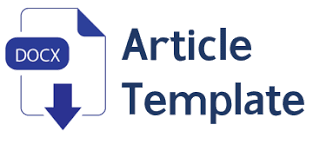ANALISIS POTENSI PENGGUNAAN BAHAN BAKAR NABATI E10, E30 DAN E50 PADA MOTOR BENSIN 9 HP SEBAGAI PENGGERAK MOTOR BOAT KETINTING
Abstract
ABSTRACT
the purpose of this research was to obtain the mixture performance of bioethanol and premium compared with Pertamax to power (P), torque (T), fuel consumption rate (mf), specific fuel consumption (sfc), and average effective pressure (mep) on a 9 HP gasoline engine and examined the blend performance of bioethanol-premium which is find out to gain or equivalent to Pertamax. This type of research is experimental research. The initial fuel used is P (Pure Pertamax), E-10 (10% Bioethanol and 90% Premium), E-30 (30% Bioethanol and 70% Premium), and E-50 (50% Bioethanol and 50% Premium). Data analysis used descriptive analysis, which describes the numerical data obtained from experimental testing and formula calculations. Results of this study showed that E30 was closest to Pertamax performance comparing to other fuels, and is even superior in terms of MF and SFC. Proved by stability torque from 2000-3500 rpm and more superior from Pertamax at 2000-2500 rpm, that difference value with in 0.655 and 0.065 Nm. The power of E30 was closest to Pertamax performance at 3500 rpm with in difference value of 0.11 KW. As well as had the lowest rate of fuel consumption rate (mf), most lowest specific fuel consumption (sfc), and the average effective pressure (mep) that closest to Pertamax performance at 2500 rpm, within difference of 57.69 kPa from all types of the fuel was examined.
Keywords: Bioethanol, Gasoline Engine, Engine Performance
ABSTRAK
Tujuan penelitian ini adalah memperoleh performa perbandingan campuran bioetanol dengan premium dibandingkan Pertamax terhadap daya (P), torsi (T), laju konsumsi bahan bakar (mf), konsumsi bahan bakar spesifik (sfc), tekanan efektif rata-rata (mep) pada motor bensin 9 HP dan meneliti performa campuran antara bioetanol-premium yang mendekati atau setara dengan performa pertamax. Jenis penelitian ini adalah penelitian eksperimen. Bahan bakar yang digunakan adalah P (Pertamax murni), E-10 (10% Bioethanol dan 90% Premium), E-30 (30% Bioethanol dan 70% premium), dan E-50 (50% Bioethanol dan 50% Premium). Teknik analisis data yang digunakan adalah analisis deskriptif yaitu mendeskripsikan data numeric yang diperoleh dari pengujian eksperimen dan perhitungan rumus. Hasil penelitian menunjukkan penggunaan biopremium E30 paling mendekati pertamax dibandingkan dengan bahan bakar lain bahkan lebih unggul dari segi mf dan sfc. Hal ini dibuktikan dengan torsi yang paling stabil dari rpm 2000-3500 dan lebih unggul dari pertamax pada rpm 2000-2500, selisih 0,655 dan 0,065 Nm. Daya paling mendekati pertamax pada rpm 3500 dengan selisih 0,11 KW. Laju konsumsi bahan bakar terendah dari keempat jenis bahan bakar. Konsumsi bahan bakar spesifik terendah dari keempat jenis bahan bakar. Dan tekanan efektif rata-rata paling mendekati pertamax pada rpm 2500, dengan selisih 57,69 kPa.
Kata Kunci : Bioethanol, Motor Bensin, Performa mesin
Keywords
Full Text:
PDFReferences
DAFTAR PUSTAKA
Nathalia Duarte Souza Alvarenga Santos, Vinícius Rückert Roso, Augusto Cesar Teixeira Malaquias, Jose Guilherme Coelho Baeta. Internal combustion engines and biofuels: Examining why this robust combination should not be ignored for future sustainable transportation. Renewable and Sustainable Energy Reviews 148 (2021) 111292.
Vinícius Rückert Roso, Nathália Duarte Souza Alvarenga Santos, Carlos Eduardo Castilla Alvarez, Fernando Antonio Rodrigues Filho, Fabricio José Pacheco Pujatti, Ramon Molina Valle. Effects of mixture enleanment in combustion and emission parameters using a flex-fuel engine with ethanol and gasoline. Applied Thermal Engineering 153 (2019) 463–472.
J.B. Heywood, Internal Combustion Engine Fundamentals, 1988.
M. Koç, Y. Sekmen, T. Topgül, H.S. Yücesu, The effects of ethanol–unleaded gaso- line blends on engine performance and exhaust emissions in a spark-ignition engine, Renew. Energy 34 (10) (2009) 2101–2106.
C. Park, Y. Choi, C. Kim, S. Oh, G. Lim, Y. Moriyoshi, Performance and exhaust emission characteristics of a spark ignition engine using ethanol and ethanol-reformed gas, Fuel 89 (8) (2010) 2118–2125.
C.P. Cooney, J.J. Worm, J.D. Naber, Combustion characterization in an internal combustion engine with ethanol-gasoline blended fuels varying compression ratios and ignition timing, Energy Fuels 23 (5) (2009) 2319–2324.
Chao Jin, Xin Liu, Tianyun Sun, Jeffrey Dankwa Ampah, Zhenlong Geng, Mubasher Ikram, Jing Ji, Gang Wang, Haifeng Liu. Preparation of ethanol and palm oil/palm kernel oil alternative biofuels based on property improvement and particle size analysis. Fuel 305 (2021) 121569.
Roberto Berlini Rodrigues da Costa, Ramón Molina Valle, Juan J. Hernández, Augusto César Teixeira Malaquias, Christian J.R. Coronado, Fabrício José Pacheco Pujatti. Experimental investigation on the potential of biogas/ethanol dual-fuel spark-ignition engine for power generation: Combustion, performance and pollutant emission analysis. Applied Energy 261 (2020) 114438.
Yazan S.M. Altarazi, Abd Rahim Abu Talib, Jianglong Yu, Ezanee Gires, Mohd Fahmi Abdul Ghafir, John Lucas, Talal Yusaf. Effects of biofuel on engines performance and emission characteristics: A review. Energy 238 (2022) 121910.
V.D. Chaudhari, Aniket Kulkarni, D. Deshmukh. Spray characteristics of biofuels for advance combustion engines. Cleaner Engineering and Technology 5 (2021) 100265.
Xanthoula Eirini Pantazi, Dimitrios Moshou, Dimitrios Kateris, Ioannis Gravalos, Panagiotis Xyradakis. Automatic Identification of Gasoline - Biofuel Blend Type in an Internal Combustion Four-stroke Engine Based on Unsupervised Novelty Detection and Active Learning. Procedia Technology 8 (2013) 229-237.
DOI: http://dx.doi.org/10.15578/chanos.v19i2.10584
Refbacks
- There are currently no refbacks.
Copyright (c) 2021 Chanos chanos
-----------------------------------------------------------------
Jurnal Penelitian Chanos Chanos
Published by Politeknik Kelautan dan Perikanan Sidoarjo
-----------------------------------------------------------------
Already Indexing:
-----------------------------------------------------------------
All published articles are licensed under a Creative Commons Attribution-ShareAlike 4.0 International License.
-----------------------------------------------------------------
EDITORIAL OFFICE:

















_25.jpg)
